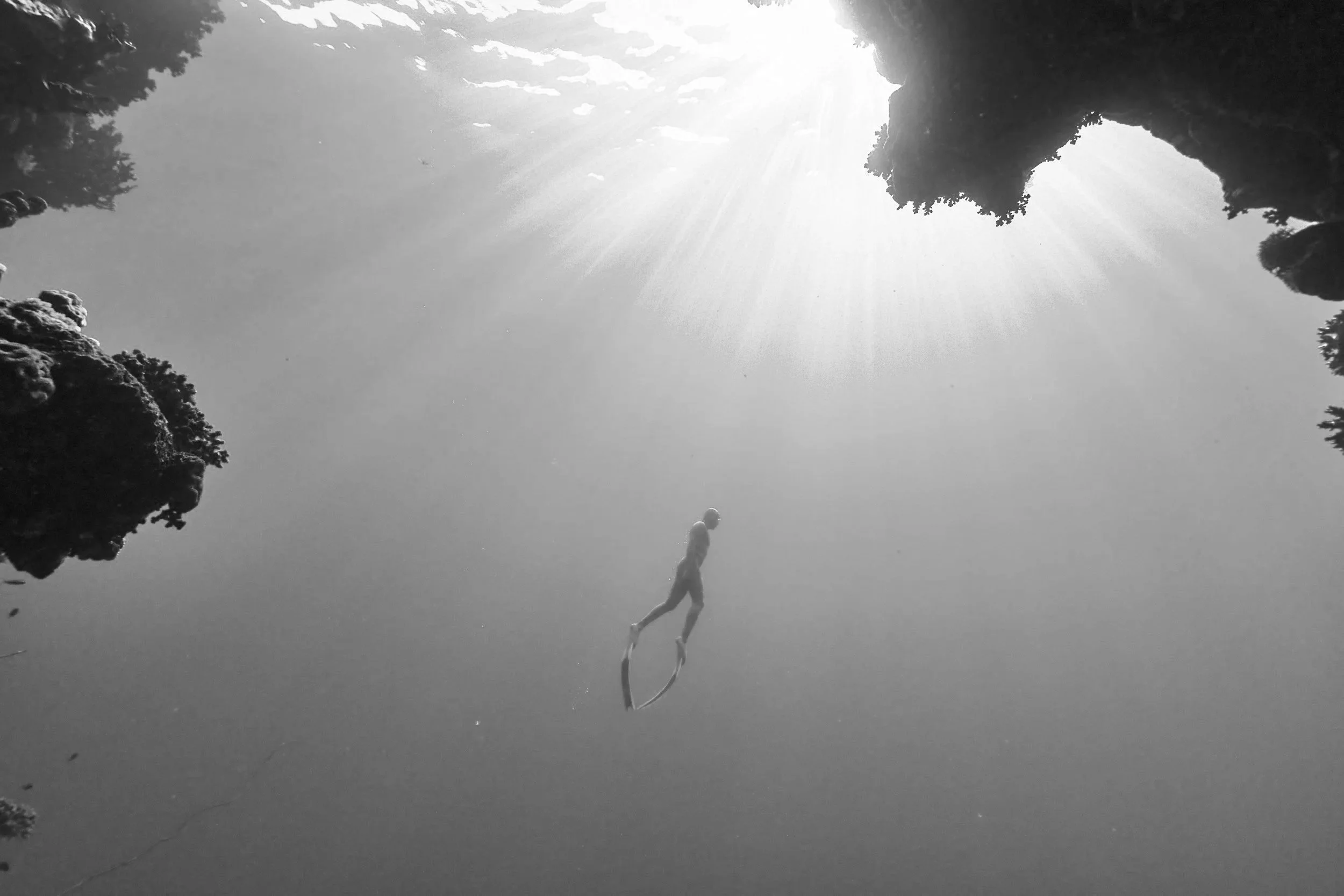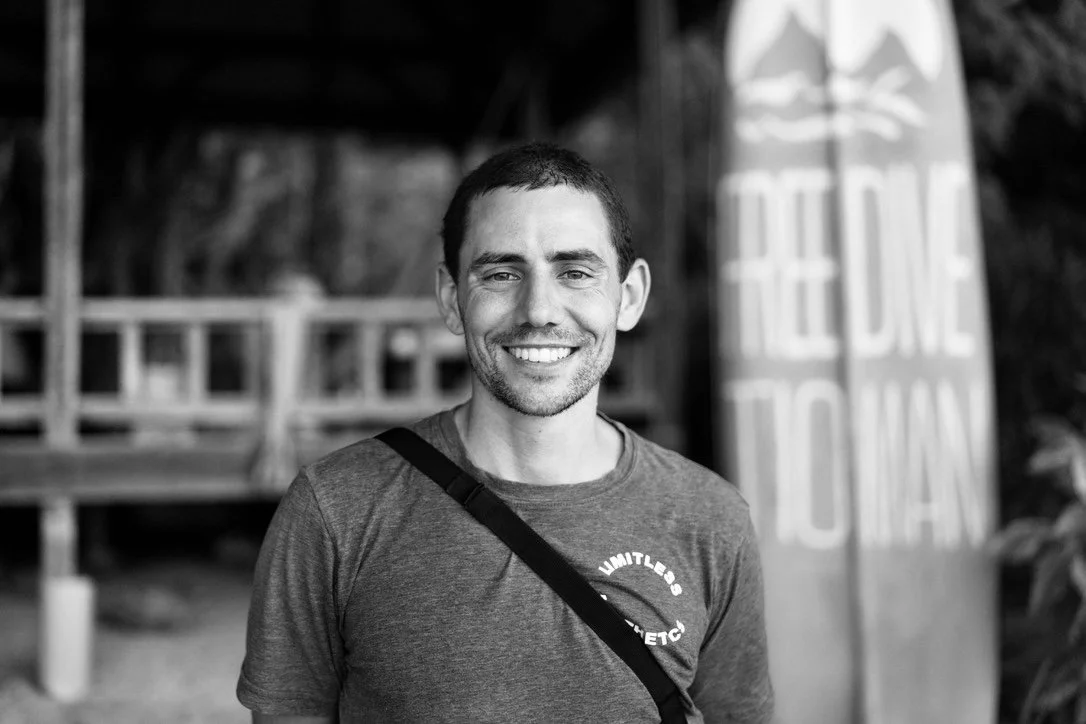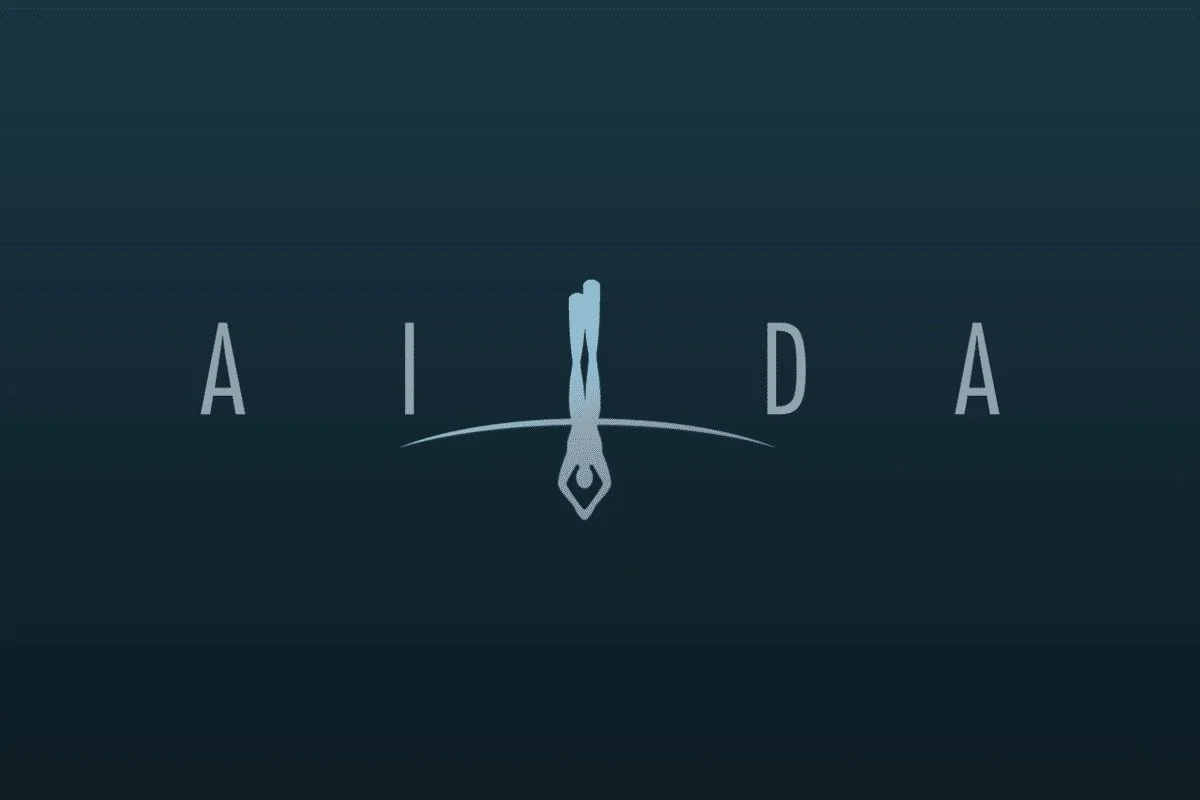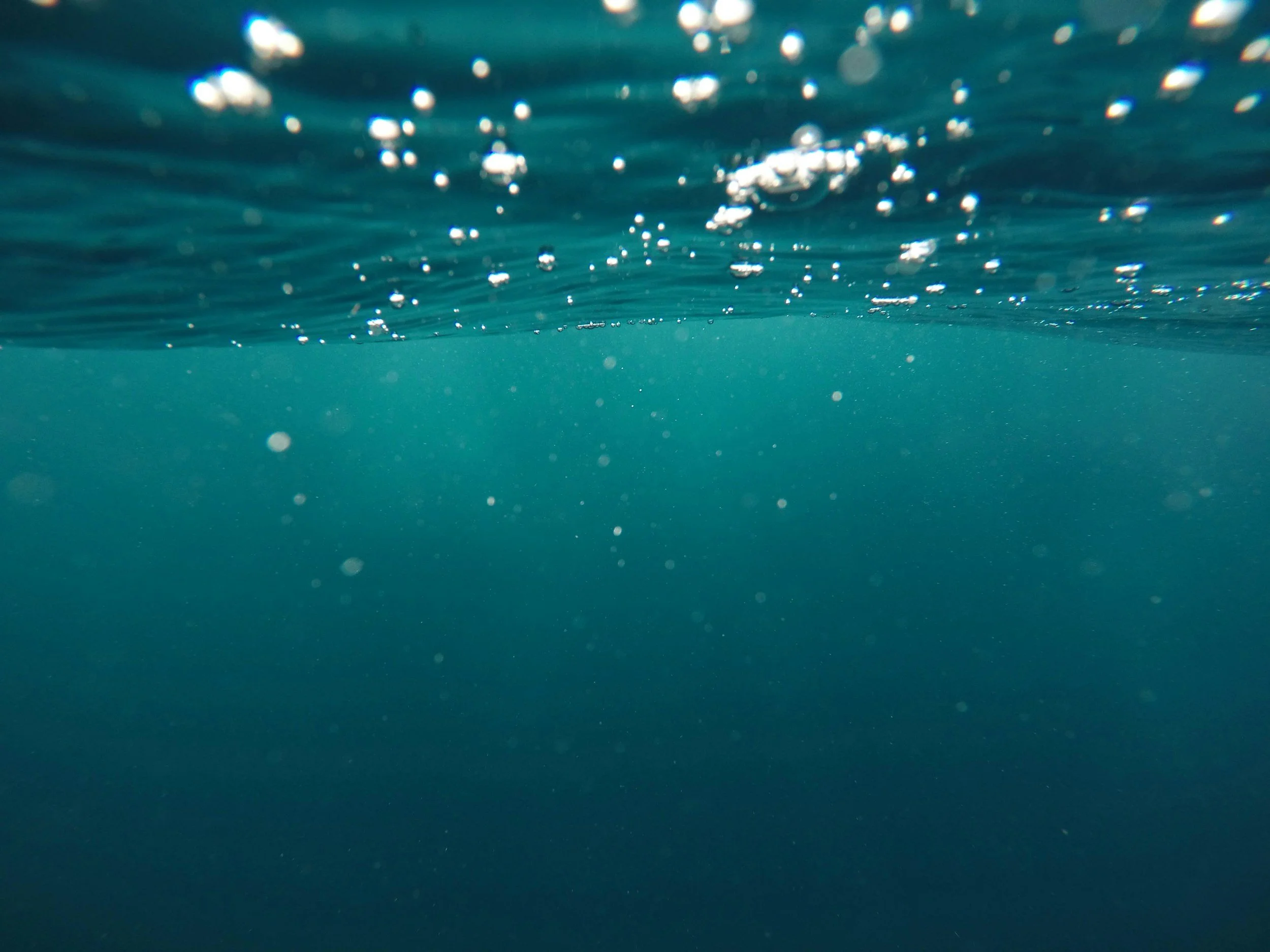
Holistic Freediving Education
with Joshua
AIDA Certified Instructor
Adult + Youth Courses & Workshops

Freediving is not just a sport, it’s a return to our ORIGIN. With a single breath, we descend beneath the surface and into ourselves, discovering that pressure doesn’t crush us… it concentrates us.
Holistic freediving is about more than time or depth; it’s a practice of presence, clarity, and remembrance.
Rooted in ancient wisdom and supported by modern science, it invites us to meet the ocean not as a thrill but as a teacher.
We train not only our bodies, but our minds and nervous systems, building the capacity to access calm, insight, and transformation under pressure.
Whether you’re seeking silence, healing, or a deeper connection to life, freediving offers a mirror. And what it reveals is not just the water… but the self, refined.
Pillars
-
No ocean required
Year-round availability
Focus on breath hold and relaxation
Perfect for beginners
-
When conditions allow
Progressive depth work
Full AIDA certification available
Advanced integration
-
AIDA 1: Foundations
AIDA 2: Beginner Freediver
AIDA 3: Advanced Freediver
Specialty Workshops: CO₂ tables, O₂ tables, equalization, etc.
-
AIDA international protocols
Never alone policy
Emergency action plans
Insurance and liability
Training &
Certification
-
AIDA stands for the International Association for the Development of Apnea. Since 1992, AIDA has been the global authority in education, safety standards, and competitive freediving. Its structured certification system is recognized worldwide and used by instructors, dive schools, and athletes to ensure high standards in both recreational and performance freediving.
-
AIDA’s training system is progressive, meaning each level builds on the previous one in both technical skill and physiological understanding. The four core recreational levels are:
🐣 AIDA1 – Introduction to Freediving
A half-day to full-day introductory course
For confident swimmers new to breath-holding
Focuses on comfort, awareness, safety, and basic techniques
No certification prerequisites required
Max depth: 10m
🌊 AIDA2 – Freediver Certification
The first full-level certification course
Covers theory, pool skills (STA, DYNB), and depth diving (CWTB, FIM)
Includes essential rescue procedures and buddy protocols
Prerequisite for AIDA3 and competitive training
Max depth: 20m
🧭 AIDA3 – Advanced Freediver
For students who want to dive deeper and train smarter
Introduces free-fall, advanced equalization, CO₂/O₂ tables, and deeper rescues
Includes physiology, blackout theory, and decompression knowledge
Enables students to train independently with qualified buddies
Max depth: 30m
🐬 AIDA4 – Master Freediver (not always offered at all schools)
For experienced divers and those considering instructor or competition paths
Covers depth diving beyond 30m, mouthfill equalization, advanced physiology, and detailed risk mitigation
Required to enroll in the AIDA Instructor Course
Max depth: 38m+
-
Students receive AIDA e-certificates upon successful completion of performance standards, safety procedures, and theory exams
AIDA certifications are recognized globally by dive centers, schools, and competition organizers
Each level requires completion of the previous one—or a crossover evaluation from another agency (SSI, PADI, Molchanovs, etc.)
-
Global standard: Used by over 100 countries
Focus on safety: Emphasizes buddy systems, rescue skills, and physiological awareness
Non-commercial & nonprofit: Run by freedivers, for freedivers
Accessible & adaptable: From ocean explorers to competitive athletes
-
It depends on your comfort in the water and previous experience, but here’s a simple guide:
🐣 Start with AIDA1 if:
You’re completely new to freediving
You want a gentle, one-day introduction to breath-holding and safety
You’re a confident swimmer but have never used fins, equalized, or practiced breathwork
You want to test the waters before committing to a full certification
📝 AIDA1 is non-certified in some schools, but it gives you a solid base and can often be used as a warm-up before AIDA2.
🌊 Start with AIDA2 if:
You’re a strong swimmer (200m swim or 300m with fins/snorkel)
You’re comfortable in open water and want to earn an internationally recognized freediving certification
You’ve done some snorkeling, diving, or breath-hold practice before
You’re ready to learn full safety procedures, rescue skills, and dive to 12–20m
🥇 AIDA2 is the first full certification level and is required for progressing to AIDA3 and beyond.
💡 Still not sure?
If you're on the fence, you can:
Start with AIDA1 and upgrade to AIDA2 mid-course if you're comfortable
Book a pre-assessment or trial dive with your instructor to see what level fits you best
Or just reach out! We're happy to help you decide based on your background and goals.
Adult Coures
AIDA 1
-
Build a strong foundation for independent recreational freediving.
🧠 Skills & Knowledge:
Full freediving breathing cycle (relaxation, full breath, recovery)
STA, DYNB, CWTB, and FIM training
Effective finning and streamlining techniques
Proper duck dives, turns, and equalization
Rescue from 5–10m (BO & LMC)
Weighting and buoyancy awareness
Freediving equipment, physics, physiology, and safety protocols
🎯 Course Goals:
Confidently dive to depths of 12–20m with solid technique and safety awareness while practicing as part of a buddy team.
-
The next step for confident swimmers ready for real freediving practice.
👤 This Course Is For:
Beginners with strong swimming skills
Snorkelers, divers, or surfers seeking formal freediving training
Anyone looking to explore ocean depth in a recreational setting
✅ Prerequisites:
Age 18+ (or 16+ with guardian consent)
Swim 200m non-stop (or 300m with mask, fins, snorkel)
AIDA Medical Form and Liability Waiver
No previous freediving certification required
🏅 Certification Requirements:
STA: 2:00 min
DYNB: 40m
CWTB: 12–20m
Theory exam: 75% minimum
Alternate certifications possible (Pool Only or AIDA1 fallback)
-
A robust, well-rounded introduction to real-world freediving.
📅 Structure & Duration:
Minimum: 2.5 days
At least 2 classroom sessions (or 90-min review with self-study)
Confined water: 2 sessions
Open water: 3+ sessions over 2 days
🧑🏫 Instructor & Ratios:
Active AIDA Instructor or higher
Confined: 8:1 (12:1 with certified assistant)
Open Water: 4:1 (6:1 with assistant)
🌊 Depth & Safety:
Max depth: 20m
Rescue training from depth
Emphasis on equalization, buoyancy, and buddy-based diving
AIDA 2
-
Explore the basics of breath-hold diving with comfort and confidence.
🧠 Skills & Knowledge:
Relaxation techniques for body and mind
Introduction to Static Apnea (STA)
Basic finning and duck dive techniques
Snorkel breathing and recovery breathing
Equalization awareness
Buddy supervision and surface rescue techniques
Equipment basics and Freediver Code of Conduct
Intro to freediving disciplines
🎯 Course Goals:
Gain confidence in the water, understand safe freediving fundamentals, and enjoy breath-hold diving to a max of 10m in a relaxed, supervised setting.
-
An ideal starting point for ocean lovers, snorkelers, and curious swimmers.
👤 This Course Is For:
Complete beginners with no prior freediving experience
Confident swimmers who want a safe introduction to breath-hold diving
Travelers and recreational divers looking to explore freediving recreationally
✅ Prerequisites:
Age 18+ (or 16+ with guardian consent)
Swim 100m non-stop
Completed AIDA Medical Form and Liability Waiver
No previous certifications required
🏅 Certification Requirements:
No performance minimums required
Demonstration of correct techniques, relaxation, and safety practices
Successful participation earns the AIDA1 Freediver Certification
-
A gentle, guided introduction with strict safety protocols.
📅 Structure & Duration:
Minimum duration: 1 day (min. 6 hours)
At least 1 water session (pool or open water)
Optional classroom theory (90 min if included) or self-study manual
🧑🏫 Instructor & Ratios:
Active AIDA Pool Instructor or higher
Confined water: 8:1 (12:1 with certified assistant)
Open water: 4:1 (6:1 with certified assistant)
🌊 Depth & Safety:
Max depth: 10m
Surface-level rescue only
Emphasis on buddy supervision, relaxed breathing, and safe entry into freediving
AIDA 3
-
Deepen your skills, precision, and physiological awareness for advanced freediving.
🧠 Skills & Knowledge:
Advanced Frenzel equalization
Free-fall technique and fine-tuned weighting
CO₂ and O₂ tables for performance training
Deep-water rescue techniques
STA, DYNB, FIM, CWTB mastery
Physiology, barotrauma, lung function at depth
Decompression theory, blackout prevention, and surface intervals
🎯 Course Goals:
Dive confidently and safely up to 30 meters while planning your own training and acting as a responsible buddy in deep freediving environments.
-
For experienced freedivers aiming to go deeper with safety and control.
👤 This Course Is For:
AIDA2 certified freedivers (or equivalent via crossover)
Divers who want to develop depth skills and deepen theoretical knowledge
Serious recreational divers and those pursuing professional or competitive paths
✅ Prerequisites:
Age 18+ (or 16+ with guardian consent)
AIDA2 Certification (or successful crossover)
AIDA Medical Form and Waiver
🏅 Certification Requirements:
STA: 2:45 min
DYNB: 55m
CWTB: 24m
Theory exam: 75% minimum
-
A multi-day, in-depth experience focused on autonomy and precision.
📅 Structure & Duration:
Minimum: 3 days
At least 3 hours of theory (or 90-min review + self-study)
Confined water: 2 sessions (max 5m)
Open water: 4 sessions over 2 days (max 30m)
🧑🏫 Instructor & Ratios:
Active AIDA Instructor or higher
Confined: 8:1 (12:1 with certified assistant)
Open Water: 4:1 (6:1 with assistant)
🌊 Depth & Safety:
Max depth: 30m
Lanyards required beyond 20m
Full deep-water rescue protocol and advanced risk mitigation
Youth Coures
Bronze Dolphin
-
Equalizing ears (basics)
Duck diving
Rope pulling technique
Partner awareness
Deeper water comfort
Marine environment respect
-
For Confident Beginners
Your child is ready for Silver Dolphin if they:
Are at least 6 years old
Can swim short distances with face in water
Can float face-down and return to standing position
Can enter and exit deep water without help
Are comfortable wearing mask and fins
Can hold their breath briefly when going underwater
Skills they'll learn:
Basic equalisation (ear pressure relief)
Duck diving from the surface
Swimming underwater to collect objects
Partner safety awareness
Focus: Introduction to equalisation and deeper water skills
Silver Dolphin
-
Basic equipment use
Floating and recovery position
Survival stroke
Signal for help
Swimming with fins
Collecting objects (shallow)
Water safety awareness
-
Starting Point for Beginners
Your child is ready for Bronze Dolphin if they:
Are at least 6 years old
Can stand comfortably in shallow water
Can put their face in the water (even if briefly)
Can back float with minimal assistance
Can blow bubbles in the water
Your child might NOT be ready if they:
Are afraid to put their face in water
Cannot maintain balance in shallow water
Panic when water touches their face
Cannot float on their back at all
Course Focus: Water safety, basic floating, breathing control, introduction to masks and fins Maximum Depth: 2 meters Note: This course prioritizes water safety over equipment use
Gold Dolphin
-
Multiple equalizations
Two diving methods
Relaxation techniques
Using buoyancy
Advanced finning
1-minute relaxation holds
-
For Intermediate Swimmers
Your child is ready for Gold Dolphin if they:
Are at least 6 years old
Can swim confidently with mask and fins
Can already equalise at least once underwater
Can float face-down and recover easily in deep water
Can enter/exit deep water confidently
Have good breath control underwater
Skills they'll learn:
Multiple equalisations during dives
Proper duck dive technique
Two diving methods (rope and finning)
Using buoyancy for easier ascents
Focus: Refining technique and building comfort at depth
AIDA Junior
-
Proper freediving technique
Weight belt safety
Recovery breathing
Advanced equalisation
Open water skills
Preparation for adult courses
-
For Strong Swimmers (Pre-Teens/Teens)
Your child is ready for AIDA Junior if they:
Are at least 12 years old
Can swim 50m non-stop with mask and snorkel
Can swim slowly for 3 minutes continuously
Can tread water for 2 minutes
Have strong water confidence
Want to learn "real" freediving skills
What makes this different:
More structured approach similar to adult courses
Introduction to freediving terminology
Weight belt safety training
4 open water sessions
Preparation for eventual adult AIDA courses
-
All courses emphasize:
Breath CONTROL, not breath HOLDING
No competitive breath holding
No static (timed) breath holds
Safety and fun through games
Age-appropriate depth and time limits
Constant instructor supervision
Your responsibilities:
Complete medical and liability forms
Understand and support water safety rules
Supervise practice outside of lessons
Never push for performance improvements
Communicate any concerns immediately
-
Start with Bronze Dolphin if:
Your child has ANY hesitation in water
They've never used diving equipment
You want to prioritize water safety first
Your child is under 8 years old
Consider skipping to Silver/Gold if:
Your child is already a confident swimmer
They can already swim underwater comfortably
They have experience with masks and fins
They're comfortable in deep water
Choose AIDA Junior if:
Your child is 12+ and wants serious training
They're interested in competitive swimming/diving
They want to eventually take adult freediving courses
They have excellent swimming endurance
-
Required Medical Assessment
Children should undergo medical assessment with parents present before enrollment.
Absolute Medical Contraindications
Your child CANNOT participate if they have:
Cardiovascular:
Anemia
Moderate/severe heart valve problems
Hypertension (>160/90 mm Hg)
Cardiomyopathy
Congenital heart disease with symptoms
Arrhythmias with syncope
Ventricular dysfunction (ejection fraction <40%)
Respiratory:
Severe asthma or COPD
Neurological:
Uncontrolled seizure disorders
Significant developmental delays preventing guided training
ENT (Ear, Nose, Throat):
Active ear infections
Perforated eardrum
Chronic sinusitis (purulent)
Active labyrinthitis
Other Conditions:
Atlantoaxial instability
Severe anaphylaxis history (depending on environment)
Temporary Exclusions
Children must be excluded if they have:
Chickenpox (until blisters dried)
Conjunctivitis
Gastroenteritis
Respiratory infections
Fever
Any contagious conditions
When to Reschedule
Wait for medical clearance after:
Ear infections: 2-4 weeks after recovery
Cardiac procedures: 3 months minimum
Sinus surgery: 1 month
Any acute illness: Until fully recovered
-
Basic Equipment Needed
Bronze Dolphin
Mask or goggles
Fins (bifins recommended)
Snorkel (optional initially)
Swimsuit
Towel
Wetsuit (optional, depending on water temperature)
Silver & Gold Dolphin
Same as Bronze, plus:
Snorkel becomes more important
Well-fitting mask essential
Consider wetsuit for longer sessions
AIDA Junior
All above, plus:
Weight belt (introduced during course)
Proper freediving fins recommended
Equipment Tips
Let child play with equipment at home day before course
Ensure proper fit (especially mask seal)
Fins should be snug but not painful
Wetsuit only if water below 24°C or child gets cold easily
No equipment dependency - skills taught without gear first
Approximate Equipment Costs
Basic mask: €15-30
Fins: €20-50
Snorkel: €10-20
Wetsuit (if needed): €50-150
Total initial investment: €50-150
-
Depth Limitations by Age
Age — Maximum Depth
6-8 years: Age ÷ 4 meters
8-10 years: Age ÷ 2 meters
11-13 years: (Age ÷ 2) + 2 meters
14-15 years: Age in meters
Time Underwater Limitations
Age — Maximum Time
6-8 years: 10 seconds
8-10 years: 15 seconds
11-13 years: 20 seconds
14-15 years: 40 seconds
Distance Limitations (Swimming with face submerged)
Age — Maximum Distance
6-8 years: 15 meters
8-10 years: 20 meters
11-13 years: 30 meters
14-15 years: 40 meters
Important Safety Notes
NO competitive breath holding ever
NO static breath holds (timed breath holding)
NO pushing for performance
Focus on technique and safety, not records
Children learn "breath control" not "breath holding"
-
Before First Session
You must complete and sign:
AIDA Medical Form
Health history questionnaire
Doctor's clearance if any conditions present
Liability Release Form
Both parents should sign when possible
Digital signatures acceptable
Understand risks involved
Emergency Contact Information
Multiple contact numbers
Pickup authorization
Medical insurance information
Documentation Retention
All paperwork kept for 7 years minimum
-
Physical Preparation
Regular swimming practice helpful
Basic water comfort essential
No specific fitness requirements
Ensure adequate rest before sessions
Mental Preparation
Discuss water safety importance
Emphasize fun over performance
No pressure to achieve specific goals
Explain it's okay to be nervous
Let them know they can stop anytime
Day Before Course
Let child play with equipment
Early bedtime
Light meal plan for course day
Pack required items
Review what to expect
Day of Course
Arrive 15 minutes early
Light meal 2+ hours before
Bring water and snacks
Warm clothes for after
Positive, relaxed attitude
-
During the Course
Required Attendance
First and last sessions recommended
Available for emergencies
Present for knowledge testing
Communication
Inform instructor of any concerns
Report health changes immediately
Provide accurate pickup information
Stay until child collected
Support Role
Encourage without pressuring
Focus on fun and safety
Avoid performance comparisons
Celebrate effort, not achievements
Post-Course Supervision
Critical Rules
You are 100% responsible for your child's safety outside courses
Never allow:
Swimming/diving alone
Breath holding competitions
Exceeding course depth/time limits
Practice without qualified supervision
Always ensure:
Qualified adult supervision in water
Following course safety guidelines
Environment appropriate for skill level
Emergency plan in place
Parent Education Requirements
To receive certification, you must:
Pass written exam on safety rules
Understand supervision requirements
Commit to enforcing safety rules
Sign acknowledgment of responsibilities
-
Requirements for Certification
Child Must:
Attend all required sessions
Demonstrate all skill objectives
Pass verbal knowledge exam
Show safe behavior consistently
Parent Must:
Pass written supervision exam
Understand safety requirements
Sign all required documents
Commit to post-course safety
If Additional Sessions Needed
Normal for some children
No additional certification fees
Focus on comfort, not speed
Individual progress respected
Certificate Benefits
International recognition
Progression to next level
Foundation for adult courses (age 16+)
Documented skill achievement
FAQs
-
A: Yes, if they meet prerequisites. Assessment required.
-
A: Private sessions available. Never forced participation. If you as a parent are comfortable in the water and/or have freediving experience, you may be able to accompany your child during the sessions.
-
A: Usually yes, but check with instructor.
-
A: Great foundation, but different focus here.
-
A: Yes, if at similar skill levels.
-
A: AIDA2 adult course at age 16+.
General FAQs
-
What exactly is freediving?
Freediving (or “apnea”) is the practice of diving underwater on a single breath—no tanks, no bubbles, just you and the water. It’s a natural, instinctive activity that starts the moment you hold your breath in water. Freediving can be practiced in oceans, lakes, rivers, or even swimming pools.Is freediving extreme? Or can anyone do it?
Freediving is often misunderstood as an extreme sport, but the AIDA system emphasizes safe, recreational freediving. Anyone who can swim and relax can learn to freedive. It’s not about “pushing limits”—it’s about listening to your body, learning technique, and reconnecting with your breath and the ocean. -
Do I need to be an expert swimmer to start?
Not at all. For AIDA1, you just need to swim 100 meters non-stop. For AIDA2, you should swim 200 meters unaided (or 300 meters with fins/snorkel). You don’t need any freediving or scuba background—just basic water comfort and curiosity.Which course should I start with?
Start with AIDA1 if you’re brand new and want a gentle, one-day introduction.
Go straight to AIDA2 if you're confident in the water and want a full certification.
→ See: “Which AIDA course should I start with?”
How long does a course take?
AIDA1: 1 day (3–6 hours)
AIDA2: At least 2.5 days
AIDA3: At least 3 days
What will I actually learn?
You’ll learn:Breathwork & relaxation
Duck diving, finning, equalization
Freediving disciplines like STA, DYN, FIM, and CWT
Safety, rescue, and buddy procedures
How to read your body and stay calm in water
-
Is freediving safe?
Yes—when trained properly and practiced with a buddy. AIDA’s system prioritizes safety at every level, including rescue techniques, blackout prevention, proper weighting, and relaxation.What’s the #1 safety rule?
Never dive alone. Always dive with a trained buddy who can respond to LMC (loss of motor control) or blackout events.What is a blackout or samba?
Blackout (BO): Temporary loss of consciousness due to low oxygen.
Samba (LMC): A loss of control or muscle coordination after surfacing.
Both can be safely managed if you’re diving with a trained buddy and following protocols.
How can I avoid these?
Never hyperventilate
Always do recovery breathing
Know your limits
Be correctly weighted and relaxed
Remove your snorkel before descending
What if I can’t equalize my ears?
You’ll learn equalization techniques starting with the Valsalva method (for beginners) and eventually the Frenzel method (in AIDA3). If you feel pressure or pain, you must stop descending and try again. Equalization should never be forced.What is the Mammalian Dive Response (MDR)?
It’s your body’s natural superpower. When your face is submerged and you hold your breath, your body activates:Slowed heart rate (bradycardia)
Blood shift to protect your lungs
Increased oxygen efficiency
Spleen contraction (releasing red blood cells)
It helps protect you during breath-hold and makes freediving safer and more fascinating.
Why are surface intervals important?
Surface intervals help you recover, avoid decompression issues, and regulate CO₂/O₂ balance. A good rule: surface rest = 2x your dive time. -
What gear do I need to start freediving?
Mask (low volume, fits your face well)
Snorkel
Bi-fins (long freediving fins or training fins)
Wetsuit (depending on water temp)
Weight belt (to help balance buoyancy)
Freediving buoy & lanyard (for open water)
Can I rent gear?
Yes! Most instructors offer rental gear. You’re welcome to buy your own later based on comfort and fit.What’s the difference between freediving and scuba gear?
Freediving gear is designed to be lightweight, flexible, and hydrodynamic. The mask has lower volume for easy equalization. The fins are longer and softer for efficient movement. -
Can I freedive if I don’t live near the ocean?
Absolutely. You can train breathwork, stretching, CO₂ tables, and static apnea in a pool or even on land. Many freedivers live inland and travel to dive.Where are the best places to freedive?
Dahab (Egypt), Bali, Philippines, Mexico, Cyprus, and Greece are popular destinations. But lakes, rivers, and pools can also be powerful places to practice.Is freediving a sport or a personal practice?
Both! You can freedive recreationally, train for performance, or even compete. But for most, freediving is about presence, self-awareness, and the joy of immersion. -
Pool Disciplines
These are performed in a pool and focus on breath-hold duration or horizontal distance:
1. STA – Static Apnea
Holding your breath without movement, usually while floating face-down in the pool.
Measures time (how long you can hold your breath).
Focus: Relaxation, mental control, CO₂ tolerance.
2. DYN – Dynamic Apnea with Fins
Swimming horizontally underwater with bi-fins or a monofin.
Measures distance covered on a single breath.
Requires streamlined technique and energy efficiency.
3. DNF – Dynamic Apnea without Fins
Swimming horizontally underwater without fins, using a modified breaststroke.
Measures distance.
Focus: Body control and streamlined efficiency.
Depth (Open Water) Disciplines
These are performed in open water using a vertical dive line and measure maximum depth achieved:
4. CWT – Constant Weight with Fins
Diving vertically with bi-fins or monofin, and returning using the same method.
You must descend and ascend using your own muscle power (no pulling on the rope or dropping weights).
Depth discipline focused on technique and equalization.
5. CWTB – Constant Weight with Bi-fins
Same as CWT, but specifically using bi-fins (no monofin allowed).
Often required in AIDA training and certifications.
6. CNF – Constant Weight without Fins
Diving vertically without fins, using only arm and leg strokes.
Most physically demanding discipline.
Measures depth under strict efficiency.
7. FIM – Free Immersion
Diving by pulling yourself down and up along the rope—no fins.
Often used for beginners or for practicing equalization at depth.
Measures depth using only upper-body strength and control.
Non-competitive / Training Contexts
VWT – Variable Weight (rarely used in AIDA recreational courses)
Diver descends using a weighted sled and ascends by finning or pulling.
NLT – No Limits (not part of AIDA education; used in deep record attempts)
Diver descends with a sled and ascends using a lift bag or other assistive device.
Considered an extreme and specialized discipline.





